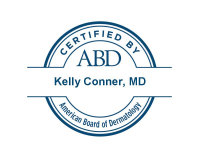Skin Conditions & Treatments > Onychomycosis (Nail Fungus)
For more information about these skin conditions please visit:
Dermatology A-Z
Nail fungus (onychomycosis) is actually quite common and something I see on many adults
when I am performing skin exams. It is considered a benign condition but can be unsightly and in some cases painful. Nails that are
infected with fungus are usually thicker and have a yellow or white discoloration. The big toenail is the most commonly affected but
all of the toenails and less commonly the fingernails can be involved. Nail fungus can be picked up anywhere people are walking with
bare feet, including the pool, the gym, and nail salons. While onychomycosis is a benign condition, many people want it
treated.
The first step is to have your dermatologist confirm that the changes in your nails
are actually due to fungus because similiar changes can be seen in other conditions such as psoriasis. Sometimes a nail
clipping or scraping is helpful in diagnosing the problem. Nails on the toes can take up to 18 months to completely grow out, so naturally
the treatment of nail fungus can be a very slow process. Oral anti-fungal medications are the most effective but should only be used
in patients without liver disease who are in good health and not on many other medications. The pills are taken either for a 3 month
course every day or on a pulsed regimen (1 week out of the month) for roughly 9 months. Blood work may be required to monitor effects
on the liver. The nail slowly grows out clear at the root. There are also various topical treatments that are safe and have no systemic
side effects but they can be ironically more expensive, have lower cure rates (20-30%), and must be used consistently for 1 year.
There is no convincing evidence that laser treatments are effective at curing onychomycosis, though it may improve the cosmetic
appearance of the nails. We can discuss all of your options for treatment at your visit.
Unfortunately,
even with treatment, nail fungus tends to recur if you continue to expose yourself by going barefoot. During and after treatment,
I recommend using anti-fungal powders (over the counter Tinactin, Lotrimin, etc) in your shoes, changing to new socks, cleaning the
shower floor and bath tube with bleach, and minimizing barefoot activities. For ladies (and men!) getting pedicures, make sure the
salon is using sterile instruments, gloves, and liners for the foot bath. Even at the cleanest salon, fungus can be lurking.
Click on the links below for more information:









